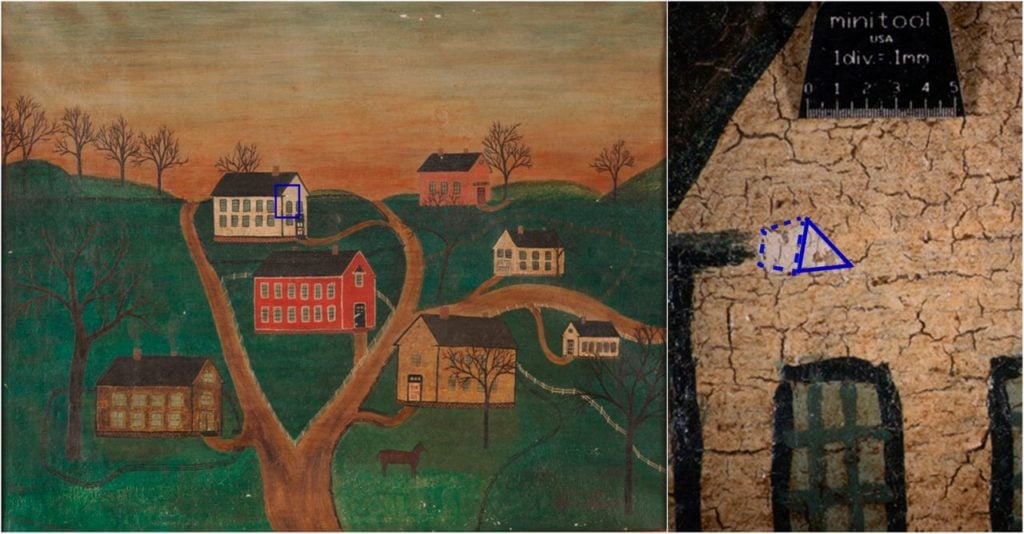Art World
The Nuclear Bomb Tests of the 1940s Can Help Identify Forged Paintings, a New Study Says
Using radiocarbon dating, researchers can now determine the age of a painting from a sample smaller than a pin point.

Using radiocarbon dating, researchers can now determine the age of a painting from a sample smaller than a pin point.

Researchers have found that a new way of using radiocarbon dating—a technique developed in the 1940s that can date cave paintings and human remains, among other things—can help determine the authenticity of famous works of art.
In a paper published this week in the Proceedings of the National Academy of Sciences, a group of researchers from Switzerland, Germany, and the US demonstrated how they can use a canvas fiber as thin as a strand of hair and a paint chip the size of a pinpoint to identify a forgery. Employing radiocarbon dating, the team was able to identify the date of the painting’s creation relative to the nuclear experiments of the mid-20th century.
Radiocarbon dating, a technique that allows scientists to determine the age of organic matter by examining its isotopic makeup, is often employed by art conservators and appraisers, but increasingly, savvy forgers have developed tricks of their own to muddy the efficacy of these tests.
The canvas studied was a work by Robert Trotter, a well-known art forger who in 1990 was sentenced to prison for a decade-long practice of selling fake paintings. Like many sophisticated forgers, Trotter often used old antique canvases for his skilled facsimiles, making them that much harder to identify as phony. (Indeed, the researcher’s examination of the painting in question proved to be inclusive.) But the scientists also excised a section of the work’s surface, smaller than a millimeter, to analyze its isotopic makeup.
This provided the answer they were looking for. In the materials used to bind the paint’s pigment, the researchers found a high number of carbon 14 isotopes—a chemical element found in the atoms of all organic matter. The number of carbon 14 isotopes are known to have dramatically increased in the atoms of all living things born after the nuclear bomb tests of the 1940s, signaling to the scientists that the painting, which Trotter claimed was done in 1866, could not have been been authentic. Instead, they determined it was likely created in the late ‘50s or mid ‘80s.
“This bomb peak is really a unique signature,” Laura Hendriks, the lead author of the study, told the New York Times. “It can be used in so many different fields, it’s just unbelievable, although it’s not a good thing.”